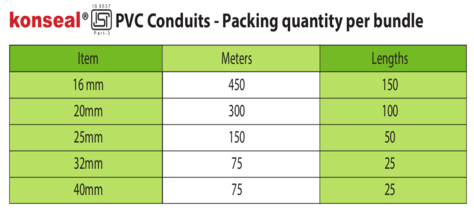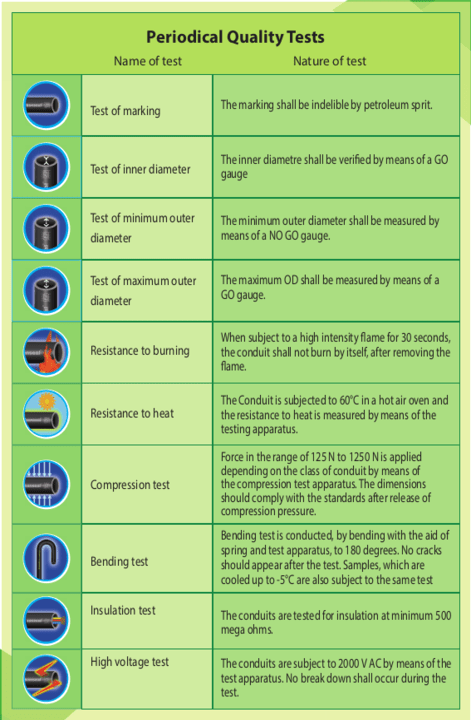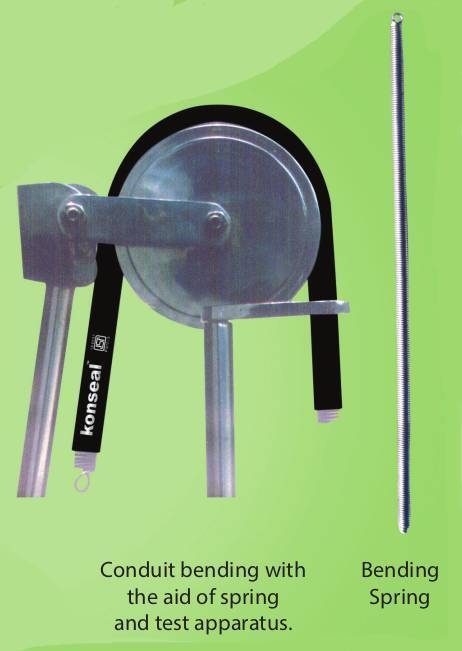konseal® PVC Conduits conforming to IS : 9537 are perfect for electrical applications, because of PVC's resistance to breakdown under high electrical voltage. It is also a poor conductor of electricity. konseal® range of conduits are resistant to weathering, chemical rotting, corrosion, shock and abrasion. Manufactured on fully automated machines, konseal® PVC Conduits are made of impact modifying, insulating compounds, mixed at 140° C in high speed mixers. With stringent quality control measures in place, it is no wonder that the product meets BIS Standards and is ISI certified



Conduit Installation - Methods Surface Installtion
In surface installation, the conduit is fixed using saddles or spacer bar saddles. The maximum recommended spacing between the saddles is 1.0 m for the horizontal conduit runs and 1.25 m for vertical conduit runs. Saddles should be fixed 20 cm on either side of bends or boxes. As PVC conduit expands, with increasing temperatures, for expansion/contraction movements in long straight runs, the use of an expansion coupling is recommended every 6 m to absorb expansion and avoid conduit buckling.
Bending

Bending of conduit up to 25 mm diameter can be carried out cold, using the correct bending spring size, according to the diameter and the gauge of the conduit. After inserting, the bend can be made by hand or across the knee, by bending slightly beyond the required angle, and allow the conduit to recover back to the required position. The bending should not be done too fast and once made a bend should not be forced backwards, as this action can lead to conduit or spring damage. According to IEE regulations, the bend inner radius should not be less than 2.5 times the conduit's outside diameter.
For conduit sizes over 25 mm diameter, hot bending is required with the same procedure as cold bending, but with the application of gentle heat just before bending. No open flame should be used for heating, rather a hot air torch or hot water. Once the conduit is warm, it can be bent around a suitable former and held there until it cools down and sets in position.
- Fire Retardant and Low Smoke tested (FRLS)
- Compression tested
- High volatage tested
- Durable
- 180 degree cold bendable
 marked
marked
Customer care: +919388619940
Sales Manager: +919446538308
 marketing@konseal.com
marketing@konseal.com
 Mon-Sat, 9am until 5pm
Mon-Sat, 9am until 5pm



